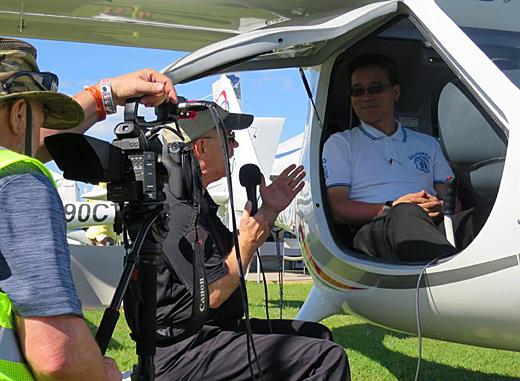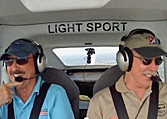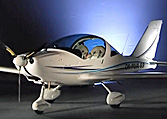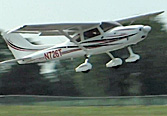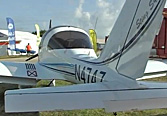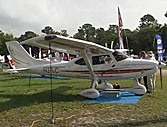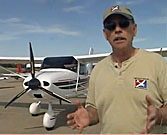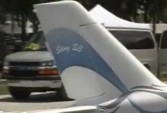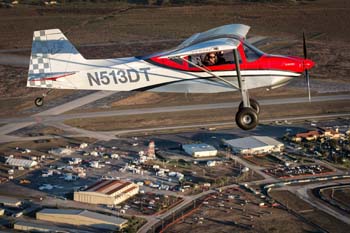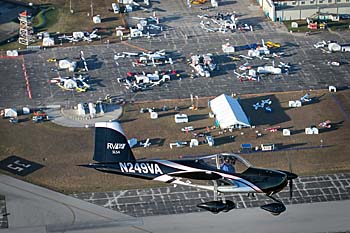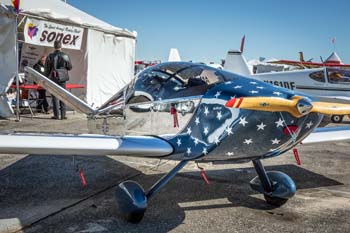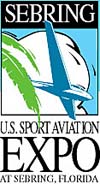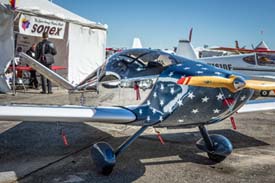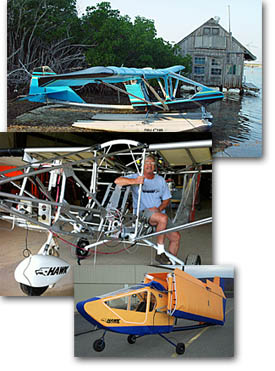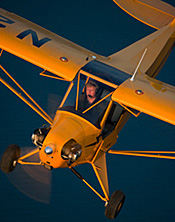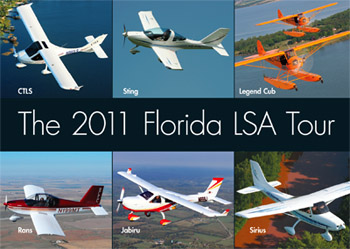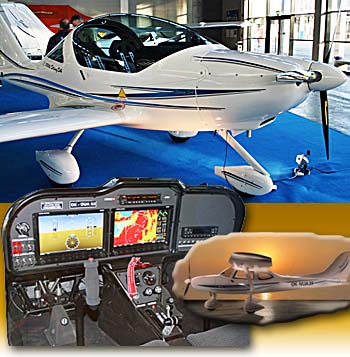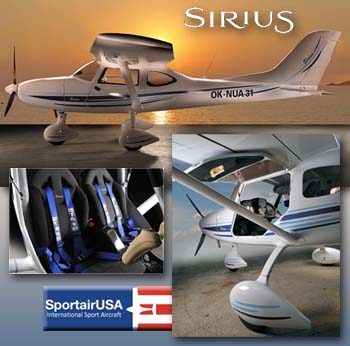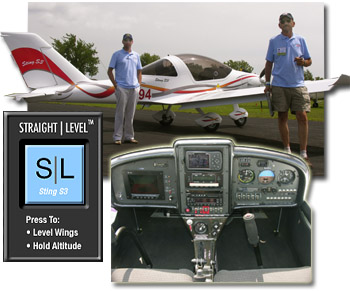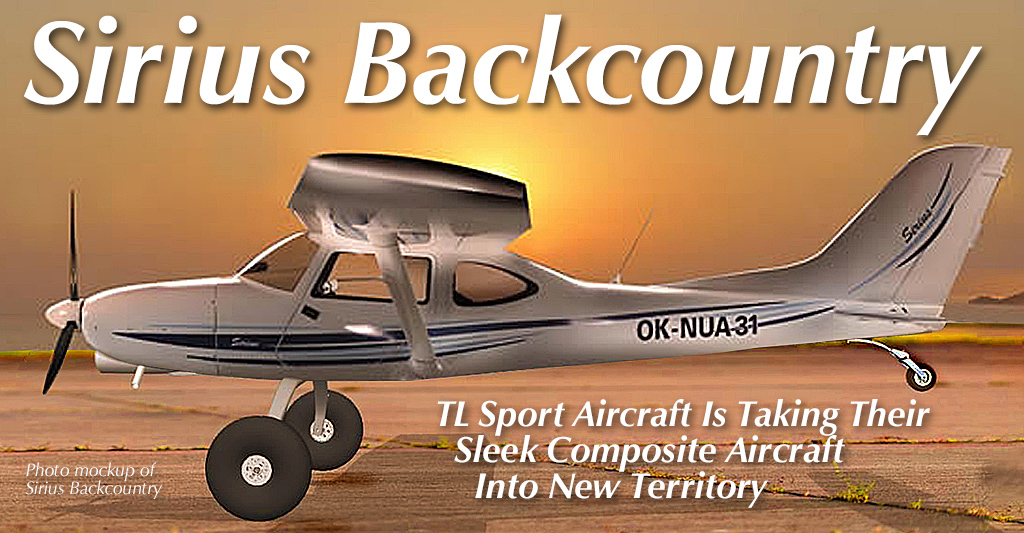
Metal or Fabric… that’s mainly been your choice when you look at LSA that can venture into unimproved landing strips. Composite aircraft with snugly-faired wheels and slippery, shiny exteriors usually stay on civilized airports. You’ve never seen a Cirrus land on a rocky creek bed, have you? Czech producer TL Ultralight has started down this path and showed a mockup (using images) at EAA AirVenture Oshkosh 2024. Additionally, recent years have seen several high wing models introduced by LSA manufacturers known for their low-wing designs. High wing aircraft are often considered more versatile on floats or on big tundra tires, though we’ve seen low-wing variations like Bristell’s tundra tire-equipped TDO (Tail Dragger Option). Thanks to a well-established production facility paired with computer-aided design, importer TL Sport Aircraft will take its all-composite Sirius into backcountry flying. Summer Celebration Oshkosh brings out the best in new aircraft.


 Metal or Fabric… that's mainly been your choice when you look at LSA that can venture into unimproved landing strips. Composite aircraft with snugly-faired wheels and slippery, shiny exteriors usually stay on civilized airports. You've never seen a Cirrus land on a rocky creek bed, have you?
Czech producer
Metal or Fabric… that's mainly been your choice when you look at LSA that can venture into unimproved landing strips. Composite aircraft with snugly-faired wheels and slippery, shiny exteriors usually stay on civilized airports. You've never seen a Cirrus land on a rocky creek bed, have you?
Czech producer 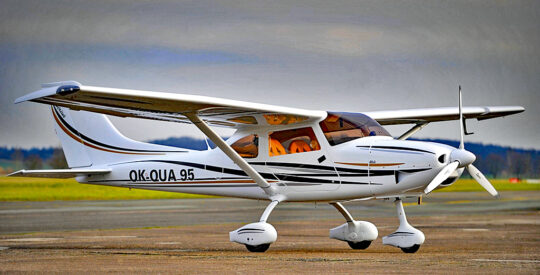
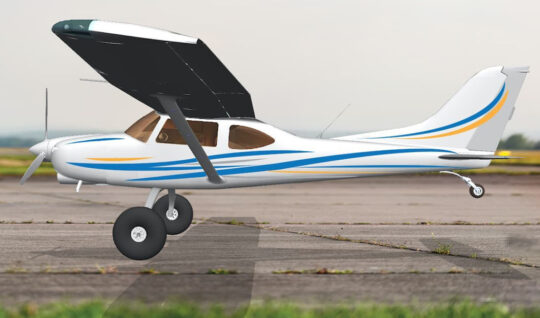
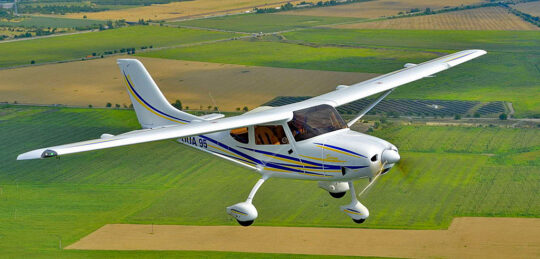 "We believe many reasons explain why backcountry flying has become very popular in North America," Trey elaborated. "One of the primary reasons is simply an opportunity to become a more experienced pilot. Many have also discovered the crowd-drawing STOL competitions across the country."
"We believe many reasons explain why backcountry flying has become very popular in North America," Trey elaborated. "One of the primary reasons is simply an opportunity to become a more experienced pilot. Many have also discovered the crowd-drawing STOL competitions across the country."
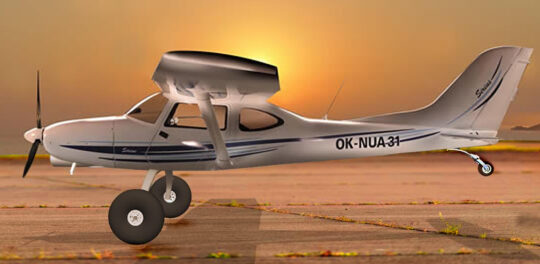
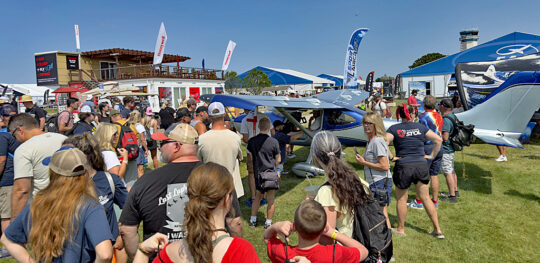
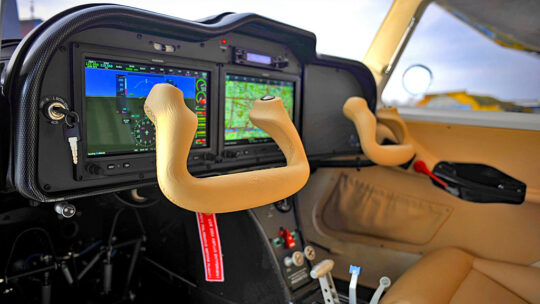 “We are excited to bring this extraordinary aircraft to the market here in North America. Sirius Backcountry is a result of 30 years of design excellence from TL engineers and we believe we have created a multi-functional, Mosaic-ready aircraft,” said Trey Murdaugh.
TL North America is the North American distributor of Sting, Sirius, Stream, and Sparker, offering sales and service in United States, Canada, and Mexico.
The Sirius Backcountry and Backcountry SE, along with the entire
“We are excited to bring this extraordinary aircraft to the market here in North America. Sirius Backcountry is a result of 30 years of design excellence from TL engineers and we believe we have created a multi-functional, Mosaic-ready aircraft,” said Trey Murdaugh.
TL North America is the North American distributor of Sting, Sirius, Stream, and Sparker, offering sales and service in United States, Canada, and Mexico.
The Sirius Backcountry and Backcountry SE, along with the entire 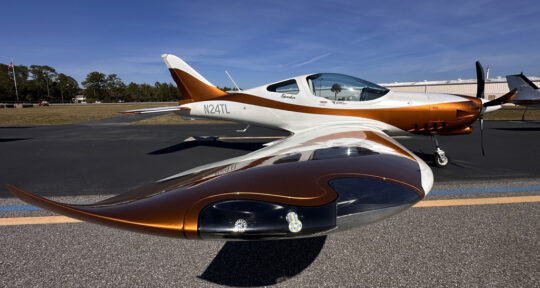 Then we have what I'll call the Mosaic LSA crowd. These are pilots with larger budgets — perhaps they sold a Cirrus or Bonanza and have equity to put toward a new aircraft. These experienced pilots are accustomed to well-equipped aircraft with generous cruise speeds.
Sparker directly addresses the last group. I got to experience this first-in-the-USA airplane when
Then we have what I'll call the Mosaic LSA crowd. These are pilots with larger budgets — perhaps they sold a Cirrus or Bonanza and have equity to put toward a new aircraft. These experienced pilots are accustomed to well-equipped aircraft with generous cruise speeds.
Sparker directly addresses the last group. I got to experience this first-in-the-USA airplane when 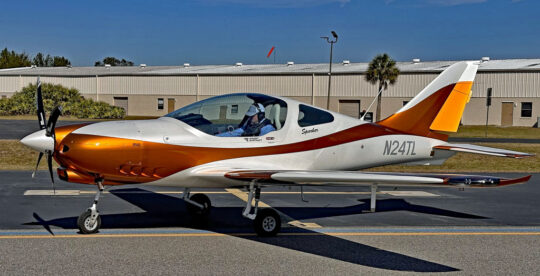 Show up at Spruce Creek (7FL6) on a nice flying day with a sharp new airplane and you are almost certain to draw a crowd. Sparker did. We almost had to shoo people away so we could get on with our demo flight.
We enjoyed a lovely Florida day in early February as you can see in the images or in the fresh new video below.
Show up at Spruce Creek (7FL6) on a nice flying day with a sharp new airplane and you are almost certain to draw a crowd. Sparker did. We almost had to shoo people away so we could get on with our demo flight.
We enjoyed a lovely Florida day in early February as you can see in the images or in the fresh new video below.
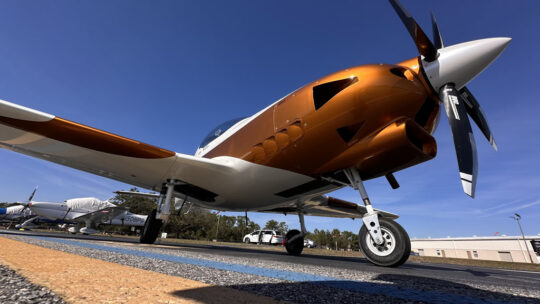 Our demo flight took us from Spruce Creek (7FL6) to DeLand (KDED) and back with maneuvering in between. We operated at altitudes of 1,200 to 4,500 feet on a mild day in the low 70s with modest humidity. My focus was on aircraft maneuvering and flight controls because the deluxe instrumentation is already familiar to pilots and because I would use Trey's experience at flying from South Carolina for cross country speeds and fuel burns; these provide real-world experience, not a test pilot's controlled findings.
Our demo flight took us from Spruce Creek (7FL6) to DeLand (KDED) and back with maneuvering in between. We operated at altitudes of 1,200 to 4,500 feet on a mild day in the low 70s with modest humidity. My focus was on aircraft maneuvering and flight controls because the deluxe instrumentation is already familiar to pilots and because I would use Trey's experience at flying from South Carolina for cross country speeds and fuel burns; these provide real-world experience, not a test pilot's controlled findings.
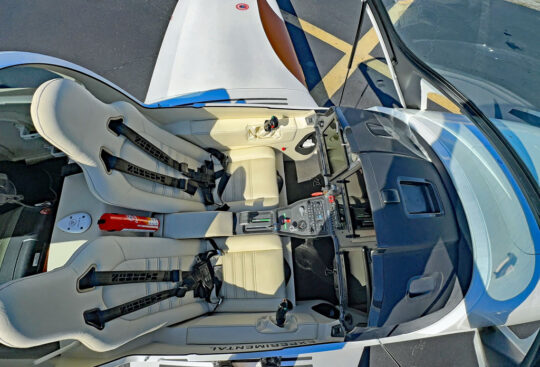 Any producer looking to sell an advanced aircraft such as Sparker better make it deluxe… and TL did. From its 50-inch-wide cockpit (a foot wider than a Cessna 172) to its Kevlar cockpit cage to its potent engine to its airframe parachute, Sparker lacks for little. Yet "little" isn't what TL designers sought.
Large comfortable seats are fixed in position but rudder pedals adjust, electrically. A button in front of each outside-mounted joystick smoothly moves pedals to meet your feet. The joysticks bristle with buttons for trim controls, PTT, autopilot off, or frequency toggle.
Any producer looking to sell an advanced aircraft such as Sparker better make it deluxe… and TL did. From its 50-inch-wide cockpit (a foot wider than a Cessna 172) to its Kevlar cockpit cage to its potent engine to its airframe parachute, Sparker lacks for little. Yet "little" isn't what TL designers sought.
Large comfortable seats are fixed in position but rudder pedals adjust, electrically. A button in front of each outside-mounted joystick smoothly moves pedals to meet your feet. The joysticks bristle with buttons for trim controls, PTT, autopilot off, or frequency toggle.
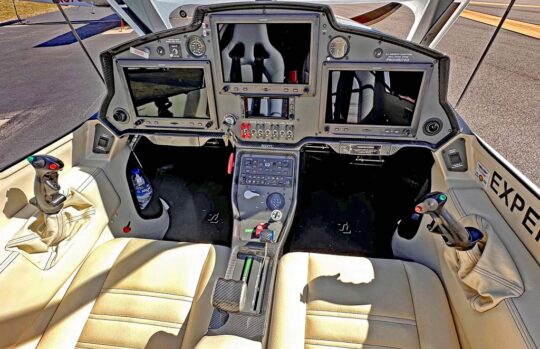 The seats themselves have tall back support and are electrically heated for colder climates or higher altitude operation. You can load up those seats with some larger pilots.
At its new gross weight ("1,652 pounds," said Trey), Sparker has a useful load that accommodates, get this!, two 230-pound occupants, plus 75 pounds of luggage, plus full fuel of 34.5 gallons. Numbers like that cover most requests I've heard. "You'd be hard-pressed to max-out Sparker's useful load," Trey concluded.
The seats themselves have tall back support and are electrically heated for colder climates or higher altitude operation. You can load up those seats with some larger pilots.
At its new gross weight ("1,652 pounds," said Trey), Sparker has a useful load that accommodates, get this!, two 230-pound occupants, plus 75 pounds of luggage, plus full fuel of 34.5 gallons. Numbers like that cover most requests I've heard. "You'd be hard-pressed to max-out Sparker's useful load," Trey concluded.
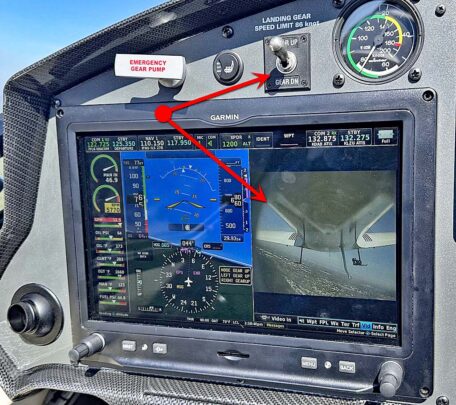 All instruments are within a comfortable reach and TL installed more screens than other LSA, a total of three 10-inch
All instruments are within a comfortable reach and TL installed more screens than other LSA, a total of three 10-inch 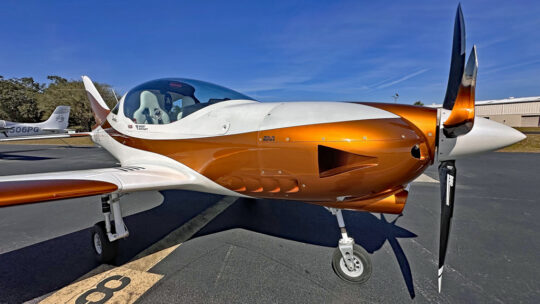 It's built mostly of carbon fiber with Kevlar reinforcements around the occupants. The main spar is also carbon fiber. Capable of an 11 G ultimate load, Sparker felt absolutely solid and rigid in the air, even when banked aggressively back and forth (see video).
Essentially a side-by-side version of TL's tandem Stream (
It's built mostly of carbon fiber with Kevlar reinforcements around the occupants. The main spar is also carbon fiber. Capable of an 11 G ultimate load, Sparker felt absolutely solid and rigid in the air, even when banked aggressively back and forth (see video).
Essentially a side-by-side version of TL's tandem Stream (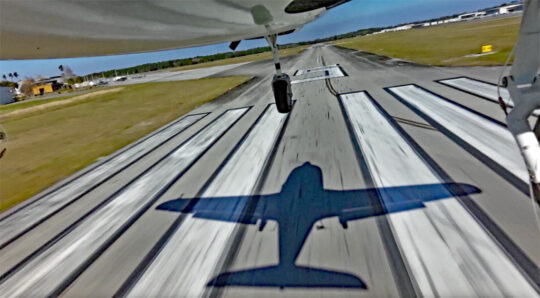 He also noted that TL anticipates installing mostly the newer 160 horsepower
He also noted that TL anticipates installing mostly the newer 160 horsepower 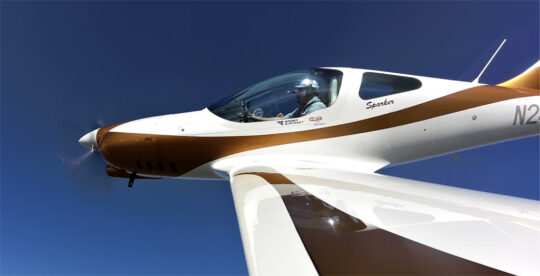 My usual Dutch roll coordination exercise went well quickly after only a few reversals to figure out the control applications. Sparker needs approximately equal amounts of stick and rudder. The controls are slightly heavy but the aircraft is very responsive. The dampened handling makes Sparker comfortable as you are less likely to overcontrol. As my experience grew Trey permitted me to bank steeply where I found Sparker eager to do my bidding. Even in very steep banks, Sparker maintained altitude easily.
I performed the landing back at Spruce Creek with Trey relaxed after I had demonstrated I could feel the airplane fairly well. Reducing to 90 knots on downwind to lower the gear, we slowed to 75 knots on final before putting down full flaps (45 degrees) to slow to 70 over the numbers. Touchdown was smooth and easily controlled. Brakes are quite strong and we turned off easily before maneuvering to a parking space.
My usual Dutch roll coordination exercise went well quickly after only a few reversals to figure out the control applications. Sparker needs approximately equal amounts of stick and rudder. The controls are slightly heavy but the aircraft is very responsive. The dampened handling makes Sparker comfortable as you are less likely to overcontrol. As my experience grew Trey permitted me to bank steeply where I found Sparker eager to do my bidding. Even in very steep banks, Sparker maintained altitude easily.
I performed the landing back at Spruce Creek with Trey relaxed after I had demonstrated I could feel the airplane fairly well. Reducing to 90 knots on downwind to lower the gear, we slowed to 75 knots on final before putting down full flaps (45 degrees) to slow to 70 over the numbers. Touchdown was smooth and easily controlled. Brakes are quite strong and we turned off easily before maneuvering to a parking space.
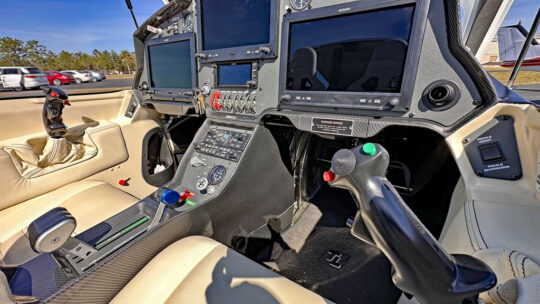 Sparker is going to please the Mosaic crowd. At $327,000 this is no Part 103 ultralight or Sport Pilot kit aircraft. You'll need a generous budget but you will get a lot for your money. So far as I could see, TL didn't miss a trick with Sparker. Check it out in person at
Sparker is going to please the Mosaic crowd. At $327,000 this is no Part 103 ultralight or Sport Pilot kit aircraft. You'll need a generous budget but you will get a lot for your money. So far as I could see, TL didn't miss a trick with Sparker. Check it out in person at  Recorded in early February 2024, this video interview offers many images and in-flight video clips.
https://youtu.be/mO6ohPaMkKQ
Recorded in early February 2024, this video interview offers many images and in-flight video clips.
https://youtu.be/mO6ohPaMkKQ
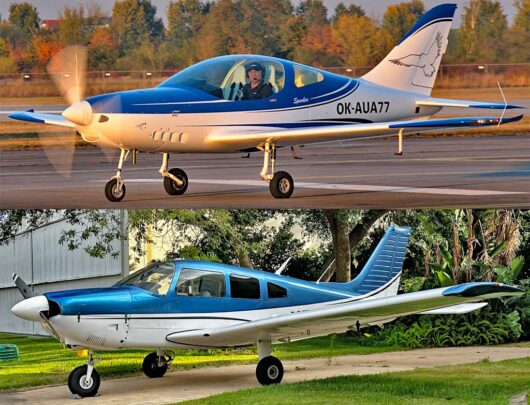
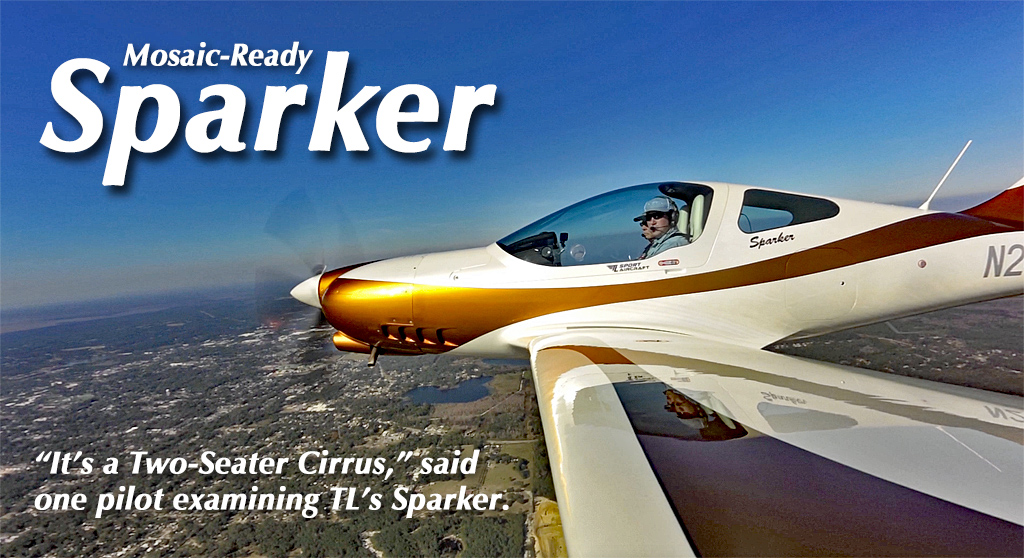
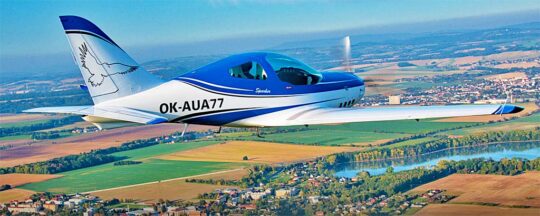 We are headed into an interesting period of aircraft development and the subject of this article is a perfect example. Welcome to TL Ultralight's enhanced Sparker.
We are headed into an interesting period of aircraft development and the subject of this article is a perfect example. Welcome to TL Ultralight's enhanced Sparker.
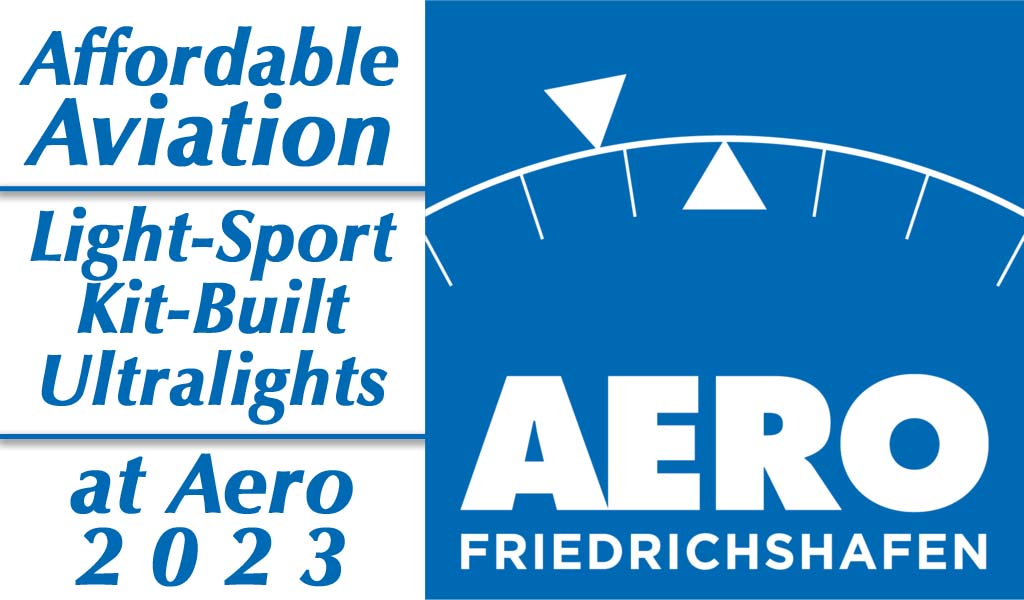 The model was introduced to the European 600 kilogram (1,320 pound) standard but over the last year it has gone through an extensive evaluation and upgrade to carry a 750 kilogram load (1,653 pounds). It was also revised to accommodate Rotax's 915iS and 916iS engines.
With greater capacity and with 160 horsepower available, I'd call this a mLSA or Mosaic-ready Light-Sport Aircraft.
The model was introduced to the European 600 kilogram (1,320 pound) standard but over the last year it has gone through an extensive evaluation and upgrade to carry a 750 kilogram load (1,653 pounds). It was also revised to accommodate Rotax's 915iS and 916iS engines.
With greater capacity and with 160 horsepower available, I'd call this a mLSA or Mosaic-ready Light-Sport Aircraft.

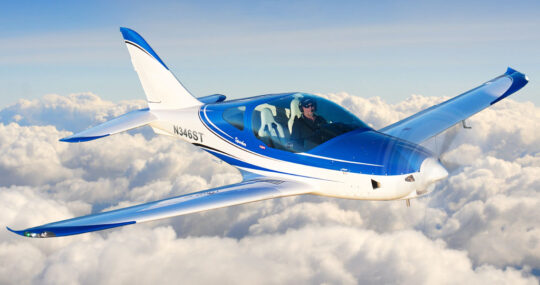 The last aircraft released by TL in 2015 was Stream, their elegant take on a tandem-seating LSA. I flew with Trey Murdaugh, proprietor of TL Sport Aircraft, the North American representative for the brand. Read about
The last aircraft released by TL in 2015 was Stream, their elegant take on a tandem-seating LSA. I flew with Trey Murdaugh, proprietor of TL Sport Aircraft, the North American representative for the brand. Read about 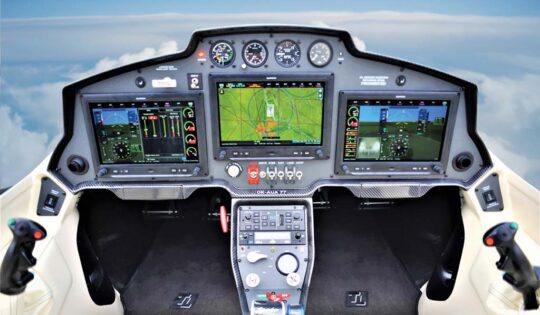
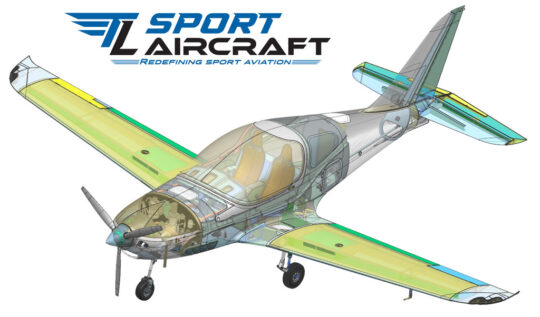 As I hear your groans over the prices we've seen in the newest Light-Sport Aircraft, please consider the prices on everything else you buy. Since Covid, many things you buy have gone up substantially in price; many items have doubled in price. That fact does not ease your financial burden and it certainly puts Sparker out of reach for some, maybe most pilots. That does not mean it is incorrectly priced; it simply may not fit your budget.
Perhaps the best news about Mosaic is that it will not negatively impact the LSA you have come to know and love. Many of those airplanes remain available at much more affordable prices. In addition, a growing number of used LSA are now available at even lower cost.
As I hear your groans over the prices we've seen in the newest Light-Sport Aircraft, please consider the prices on everything else you buy. Since Covid, many things you buy have gone up substantially in price; many items have doubled in price. That fact does not ease your financial burden and it certainly puts Sparker out of reach for some, maybe most pilots. That does not mean it is incorrectly priced; it simply may not fit your budget.
Perhaps the best news about Mosaic is that it will not negatively impact the LSA you have come to know and love. Many of those airplanes remain available at much more affordable prices. In addition, a growing number of used LSA are now available at even lower cost.
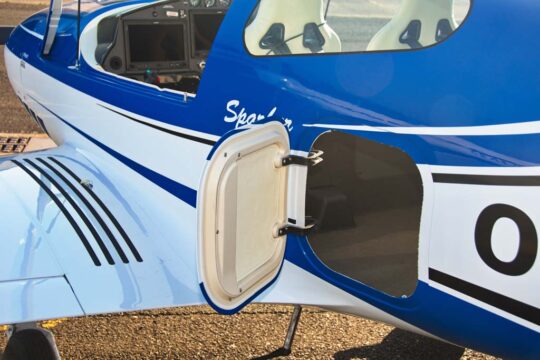 Yet if you have the budget or some partners, Sparker might be just the airplane to ignite your flying interests.
"The first Sparkers will come in under the Experimental Exhibition category," said Trey. He and TL personnel will investigate mLSA approval after Mosaic is out.
Come
Yet if you have the budget or some partners, Sparker might be just the airplane to ignite your flying interests.
"The first Sparkers will come in under the Experimental Exhibition category," said Trey. He and TL personnel will investigate mLSA approval after Mosaic is out.
Come 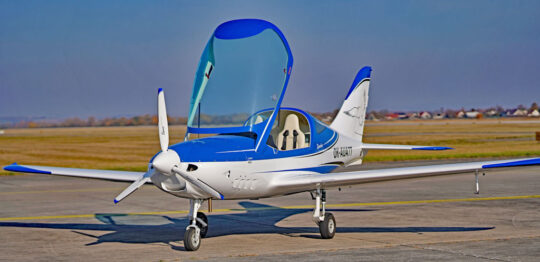 Once Mosaic arrives, I expect you will find TL Ultralight's Sparker to be an early aircraft to gain approval. Fortunately, pilots interested today don't need to wait until 2025 — the earliest date Mosaic could be fully available. Trey said the deluxe Sparker could be delivered in 7-8 months. Use the contact information below to obtain pricing and availability.
Once Mosaic arrives, I expect you will find TL Ultralight's Sparker to be an early aircraft to gain approval. Fortunately, pilots interested today don't need to wait until 2025 — the earliest date Mosaic could be fully available. Trey said the deluxe Sparker could be delivered in 7-8 months. Use the contact information below to obtain pricing and availability.
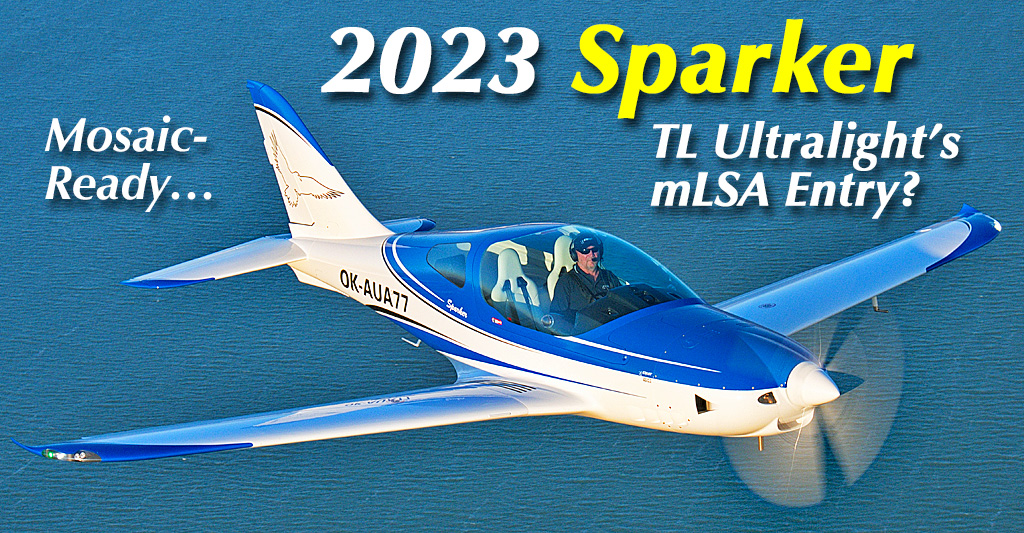
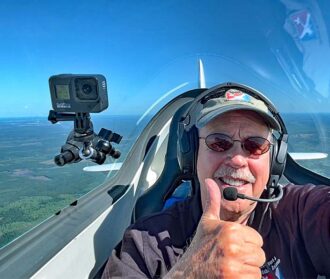 I captured video from multiple cameras for each aircraft; watch for our video pilot report soon. While the video is in editing, I will give a short review of the Stream. This was a new experience for me.
As flown, TL's Stream is in Experimental-Exhibition category. That will suffice for a few examples, but the future involving Mosaic may be inviting for Stream, so the model could get a leg up on some competitors by establishing a U.S. presence before Mosaic becomes the governing regulation.
I captured video from multiple cameras for each aircraft; watch for our video pilot report soon. While the video is in editing, I will give a short review of the Stream. This was a new experience for me.
As flown, TL's Stream is in Experimental-Exhibition category. That will suffice for a few examples, but the future involving Mosaic may be inviting for Stream, so the model could get a leg up on some competitors by establishing a U.S. presence before Mosaic becomes the governing regulation.
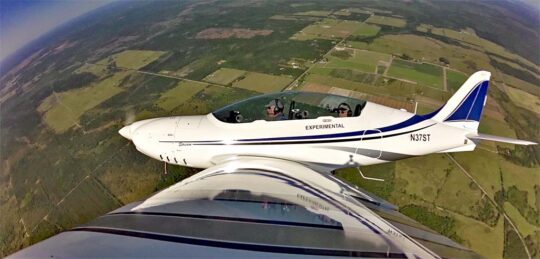 Up front instrumentation is larger and you do fly solo from the front. Yet in the back, I had a seven-inch Garmin touch screen that provided the same info in a smaller package. For example, the gear position shows in both locations… although, like most digital screens, it may take a while to pick out the data you want from all that is displayed.
The aft seat also has a full-featured joystick with buttons for elevator and aileron trim, push to talk and other functions. It has everything the front seat has so you can enjoy flying Stream from the back as much as the front.
Up front instrumentation is larger and you do fly solo from the front. Yet in the back, I had a seven-inch Garmin touch screen that provided the same info in a smaller package. For example, the gear position shows in both locations… although, like most digital screens, it may take a while to pick out the data you want from all that is displayed.
The aft seat also has a full-featured joystick with buttons for elevator and aileron trim, push to talk and other functions. It has everything the front seat has so you can enjoy flying Stream from the back as much as the front.
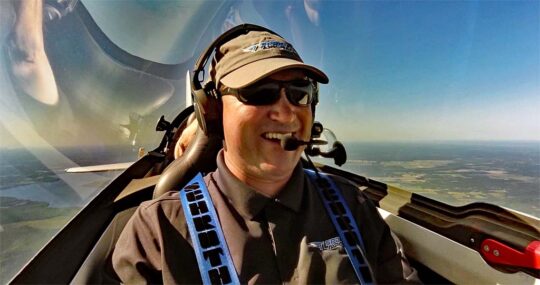 However, in one way the front proves superior, regarding runway visibility on approach to landing. With no flaps or with one notch deployed, I had no sight picture from the aft seat. However, with full flaps, I could easily keep an eye on the runway. An offset to the aft seat visibility looking forward is that you have an excellent straight down view that the front PIC seat lacks; the pilot up front is seated at the wing midpoint so downward visibility is restricted.
However, in one way the front proves superior, regarding runway visibility on approach to landing. With no flaps or with one notch deployed, I had no sight picture from the aft seat. However, with full flaps, I could easily keep an eye on the runway. An offset to the aft seat visibility looking forward is that you have an excellent straight down view that the front PIC seat lacks; the pilot up front is seated at the wing midpoint so downward visibility is restricted.
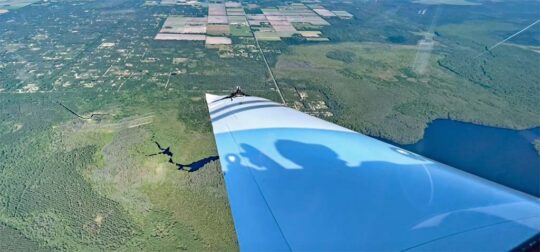 What you might be more surprised to learn is how gentle its stall characteristics are and how slow it can go on landing.
I asked Trey to demonstrate stalls and then did some myself and in every such trial Stream was as gentle in stall response as any aircraft in the LSA space. We were not particularly aggressive as this is a clean airplane and is unfamiliar to me, but we did several stalls and every one of them demonstrated extremely benign characteristics that resulted in virtually no nose drop stall break nor any wing wobble. This is remarkably convincing stability for any aircraft in the space but certainly one aimed at the performance end of the market.
What you might be more surprised to learn is how gentle its stall characteristics are and how slow it can go on landing.
I asked Trey to demonstrate stalls and then did some myself and in every such trial Stream was as gentle in stall response as any aircraft in the LSA space. We were not particularly aggressive as this is a clean airplane and is unfamiliar to me, but we did several stalls and every one of them demonstrated extremely benign characteristics that resulted in virtually no nose drop stall break nor any wing wobble. This is remarkably convincing stability for any aircraft in the space but certainly one aimed at the performance end of the market.
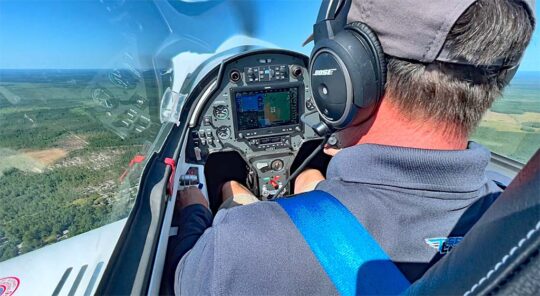 Since I mentioned the aircraft speeds along quite well, I rush to say I was rather amazed that Stream could slow down into the high-30s (knots) when flaps are deployed. From 39 knots indicated to 150 knots in cruise, we start to approach that magic 4:1 stall-to-cruise target that any designer likes to achieve (it's not an easy mark to hit).
As we came into land and as Trey put down the flaps, I mentioned above that the site picture improves for the aft seat when flaps are fully deployed. They go down 40°, Troy said, so these are some fairly deep flaps. On initial deployment, flaps look ordinary and rather small; in the aft seat I had a clear view of flap operations. Then I observed the Fowler flap construction as the flaps continued to deploy. That's when you see how effective this construction can be.
I readily admit I was taken by surprise at the very slow speeds we achieved on landing. Trey says 400 feet of ground roll is achievable and it's possible to land even shorter with skill and correct use of the controls. I would have doubted this was possible had I not seen the excellent stall characteristics and how slow Stream could fly.
Since I mentioned the aircraft speeds along quite well, I rush to say I was rather amazed that Stream could slow down into the high-30s (knots) when flaps are deployed. From 39 knots indicated to 150 knots in cruise, we start to approach that magic 4:1 stall-to-cruise target that any designer likes to achieve (it's not an easy mark to hit).
As we came into land and as Trey put down the flaps, I mentioned above that the site picture improves for the aft seat when flaps are fully deployed. They go down 40°, Troy said, so these are some fairly deep flaps. On initial deployment, flaps look ordinary and rather small; in the aft seat I had a clear view of flap operations. Then I observed the Fowler flap construction as the flaps continued to deploy. That's when you see how effective this construction can be.
I readily admit I was taken by surprise at the very slow speeds we achieved on landing. Trey says 400 feet of ground roll is achievable and it's possible to land even shorter with skill and correct use of the controls. I would have doubted this was possible had I not seen the excellent stall characteristics and how slow Stream could fly.
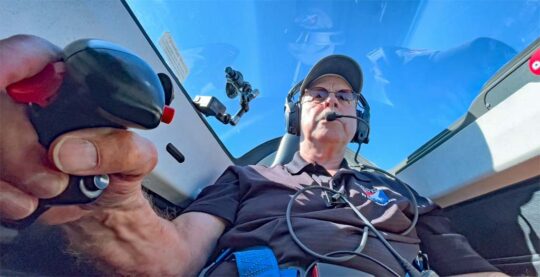 Then, through a series of turns, I discovered that Stream will hold its altitude very well without power or trim adjustments of any kind. Of course, using those controls will make handling even better I suspect, but stick pressures remained light and it was simply unnecessary to employ those controls in order to produce turns that maintained altitude and speed. These are wonderful characteristics for Stream to demonstrate.
Back on the ground I again took the controls and found taxi steering to be responsive, further amplified by directional braking that that assures maneuvering on a ramp will be easy.
Then, through a series of turns, I discovered that Stream will hold its altitude very well without power or trim adjustments of any kind. Of course, using those controls will make handling even better I suspect, but stick pressures remained light and it was simply unnecessary to employ those controls in order to produce turns that maintained altitude and speed. These are wonderful characteristics for Stream to demonstrate.
Back on the ground I again took the controls and found taxi steering to be responsive, further amplified by directional braking that that assures maneuvering on a ramp will be easy.
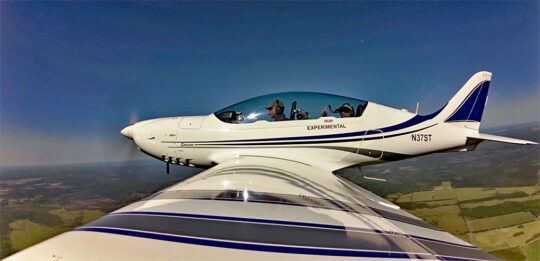
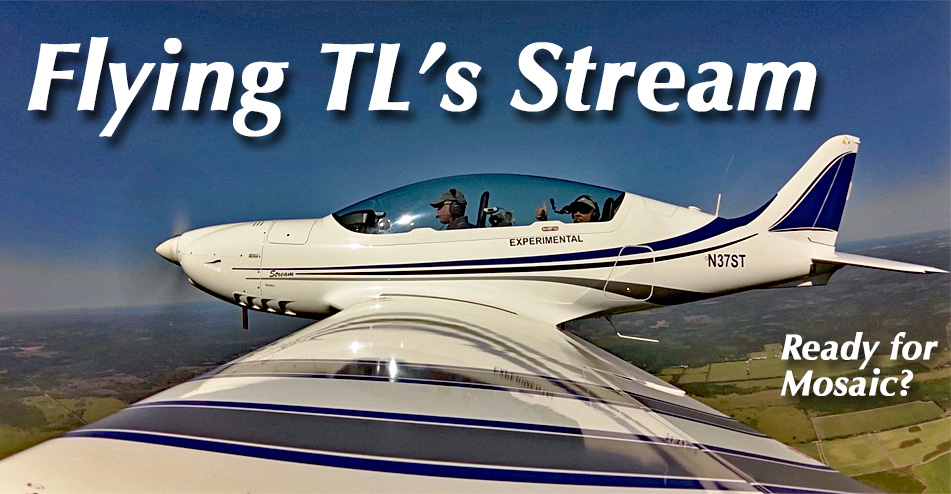
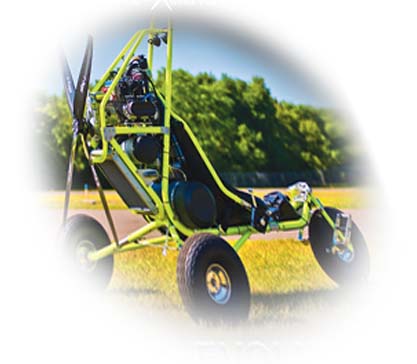
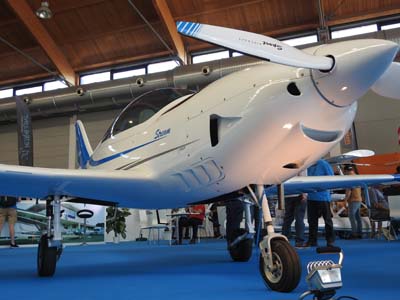 Welcome to Stream, a carbon fiber, low wing, tandem seating, retractable gear lightplane. Stream is clearly part of the TL family but is completely different than the preceding two models — that Americans already know.
Sting has been their lead example through four iterations of the sleek low wing design: Sting-S2-S3-S4. Years ago Sting was offered with retractable gear but then came Light-Sport Aircraft rules so fixed gear became the norm. Later came the similarly built but high wing, yoke-controlled Sirius. Now, Stream…
Welcome to Stream, a carbon fiber, low wing, tandem seating, retractable gear lightplane. Stream is clearly part of the TL family but is completely different than the preceding two models — that Americans already know.
Sting has been their lead example through four iterations of the sleek low wing design: Sting-S2-S3-S4. Years ago Sting was offered with retractable gear but then came Light-Sport Aircraft rules so fixed gear became the norm. Later came the similarly built but high wing, yoke-controlled Sirius. Now, Stream…
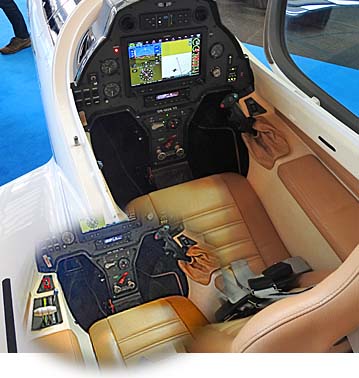 The U.S. based company, with roots in the origin country of Czech Republic, is displaying a Sting, a turbo Sting, the company's high wing Sirius, and Stream. The example was built as it must be for the American market as an Experimental Amateur Built model. A husband and wife team just return from a month in Czech Republic where they fulfilled all requirements for FAA approval. It is their airplane on display.
The U.S. based company, with roots in the origin country of Czech Republic, is displaying a Sting, a turbo Sting, the company's high wing Sirius, and Stream. The example was built as it must be for the American market as an Experimental Amateur Built model. A husband and wife team just return from a month in Czech Republic where they fulfilled all requirements for FAA approval. It is their airplane on display.
